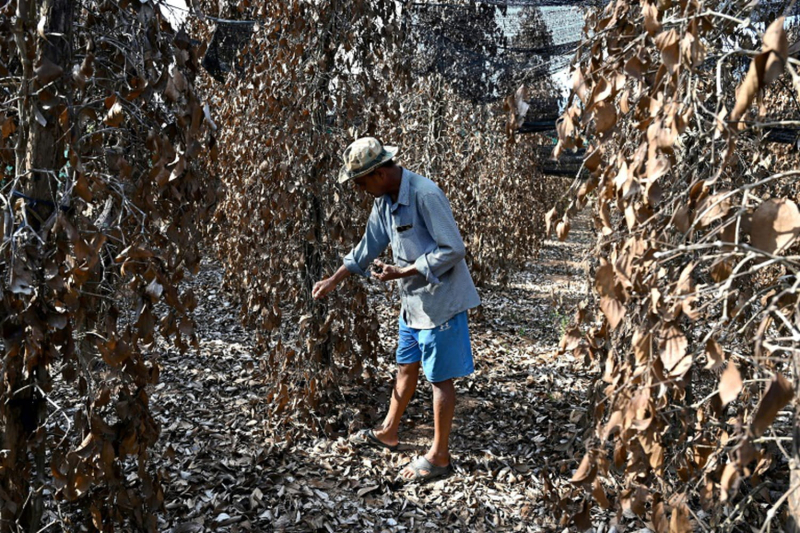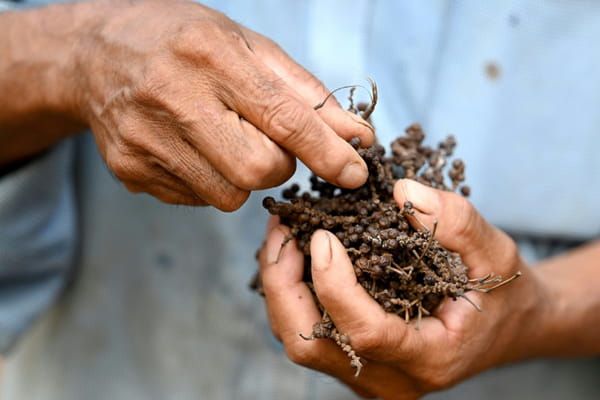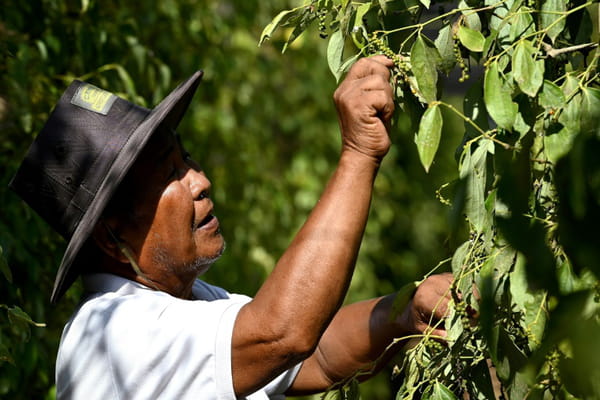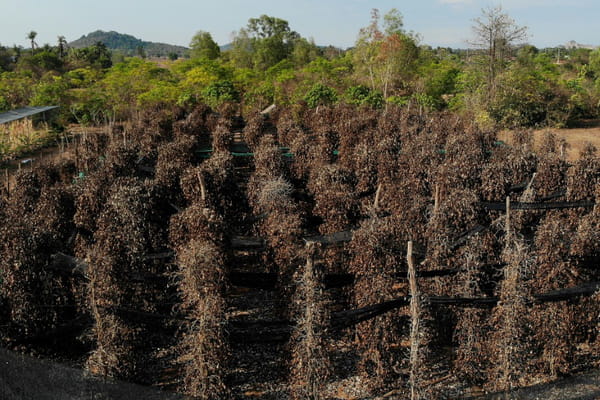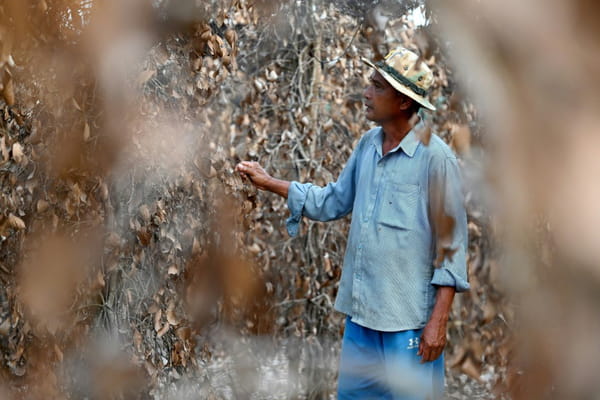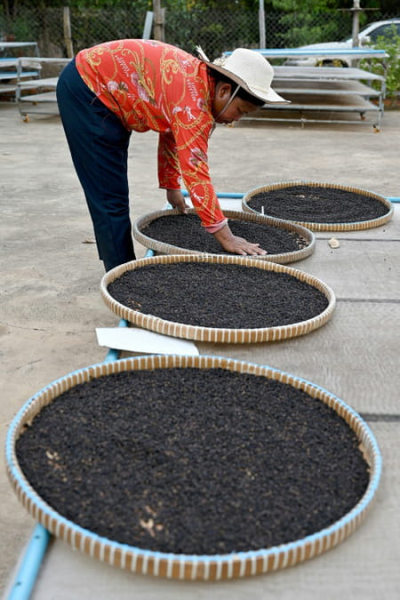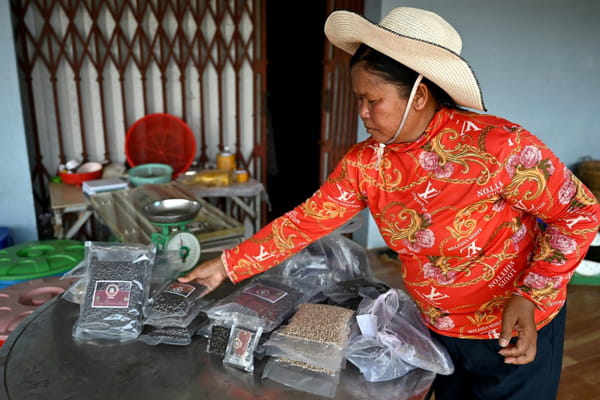Brownish leaves and clusters of dead grains: the Chhim Laem pepper plantation in the Kampot region of southern Cambodia offers a spectacle of desolation after The long drought and extreme temperatures that the country has just experienced. The farmer shakes his head in annoyance as he crosses the devastated rows which announce an almost zero harvest. “It’s very hot this year, it’s not raining and we don’t have water to water the plants.” “So they perished,” Chhim Laem explains to AFP. Cambodian farmer Chhim Laem holds a dried-out bunch of pepper on May 8, 2024 in the Kampot region in the south of the country. © AFP – TANG CHHIN Sothy South and Southeast Asia have experienced an extreme heat wave in recent weeks after long months of drought. In parts of Cambodia, the mercury reached 43°C. Human-induced climate change will lead to more frequent, longer and more intense heatwaves, warn scientists regularly. Appreciated by great chefs around the world for its spicy aroma with floral and menthol notes, Kampot pepper is considered the caviar of pepper, sold in delicatessens around 200 euros per kilo. Nguon Lay, a Cambodian farmer, examines peppercorns in his plantation, May 7, 2024 in the Kampot region, in the south of the country. © AFP – TANG CHHIN Sothy Its small production, – 120 tonnes last year -, is concentrated in a small plain region near the Gulf of Thailand, and the European Union recognized it with the Geographical Indication label in 2016 protected (IGP). – worst year – At 55, Laem has never known worse year. He who usually earns $1,000 per year from his plantation expects an income close to zero this year. Aerial view of a pepper plantation ravaged by drought, May 8, 2024 in the Kampot region, in the south of the country. © AFP – Suy SE “It makes me so sad, but I don't know what to do,” he says. He has lost all of his 264 pepper trees in recent weeks due to climate change, which in this region results in too much heat and too little rainfall. Going back several generations, pepper cultivation in Kampot survived the Khmer Rouge and political instability but is now threatened by climate. “We see the problems, but we can't solve them,” says Nuong Lay, 71, another pepper farmer in the region. Cambodian farmer Chhim Laem in his drought-ravaged pepper plantation on May 7, 2024 in the Kampot region in the south of the country. © AFP – TANG CHHIN Sothy “We know about climate change, we have stored water, we have built roofs to protect our pepper trees from the high heat, but that has not been enough”, notes the farmer, fourth generation to plant pepper. – Harvest close to zero He too expects a harvest close to from zero, compared to 9 tonnes last year on his 5 hectare farm. He no longer goes to his field, it’s too painful to see, he says. A Cambodian worker aerates pepper on trays on May 8, 2024 in the Kampot region, in the south of the country. © AFP – TANG CHHIN Sothy Some plants were destroyed at the start of the season by excessive rain, others were destroyed later because of prolonged drought. These extreme phenomena affect no only the harvests but also the quality of the grains, which must meet very rigorous standards. According to Lay, those in Europe or the United States who appreciate Kampot pepper, whether black, white or red, will soon be affected. “For 2024 and 2025, we will not have an abundance of pepper for them. Zero!”, he proclaims. The worldwide fame of Kampot pepper dates back to the French colonial era. It was widely exported before almost disappearing under the Khmer Rouge regime in the 70s and 80s. Recently production has jumped again and pepper has found its place on the tables of starred restaurants around the world. According to Kann Sinouch, president of the Kampot Pepper Promotion Association, the yield will be halved this year, and exports may experience a shortage in 2025. For him, Kampot farmers have no choice but to adapt by finding solutions to store more water. A worker bags pepper from a plantation on May 8, 2024 in the Kampot region, in the south of the country. © AFP – TANG CHHIN Sothy “We hope next year will be better for us,” said Sinouch, whose farm saw a 70 percent drop in yield this year. Chan Deng had no better luck. This farmer lost 20% of his pepper trees and will only harvest 20 kg of pepper this year, compared to 300 last year. But Deng remains combative. He will dig more wells and hopes to return to a good yield within 3 years. “In the meantime, we will fight against nature.” All rights of reproduction and representation reserved. © (2024) Agence France-Presse